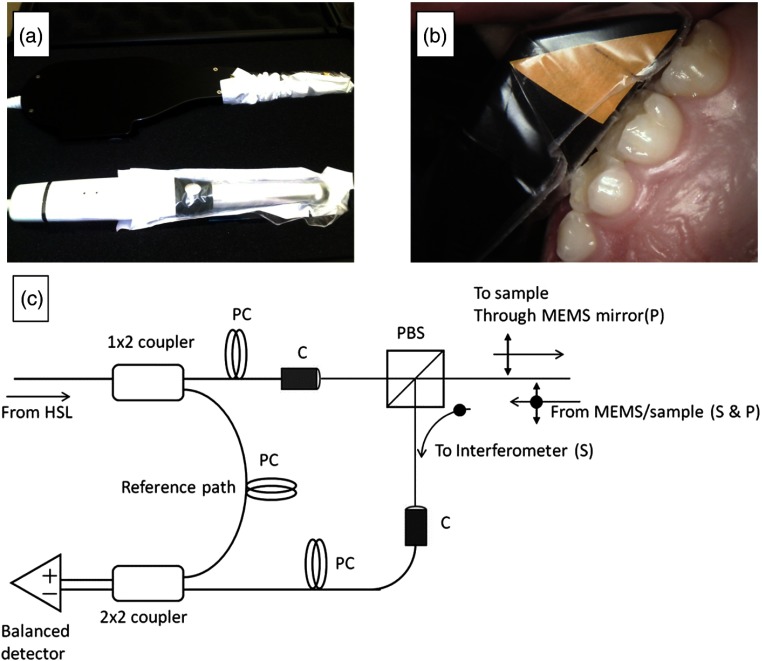Fig. 1.
(a) The cross-polarization optical coherence tomography (CP-OCT) system (Santec Corporation, Japan) has an intraoral probe that has similar dimensions of an intraoral camera. (b) A clinical disposable polyvinyl barrier (Tidi Products, Neenah, Wisconsin) is used while imaging teeth in real-time. (c) Housed in the body of the intraoral probe casing was a Mach-Zehnder type interferometer (I). The system used a polarization beam splitter (PBS) to illuminate a two axis tilt MEMS scanning mirror with linearly polarized light (P). Light from a swept source near infrared laser (HSL) was coupled into single-mode fiber and then was split into a reference and sample arm. In the sample arm, a PBS isolated the cross polarization state (S) in the backscattered light. A collimator system (C) was used between the fiber and free space paths. In order to control the polarization states of the light in the reference and sample arms and produce an optimum interference pattern, polarization controllers (PC) were used. The interference signal was measured by two balanced detectors. The resulting electrical signal was then digitized by a high speed data acquisition board (DAQ) and image processed for reconstruction of the spatial information in the tooth sample.

